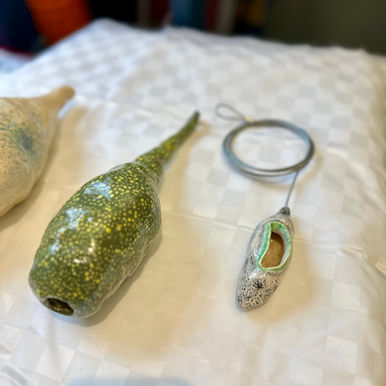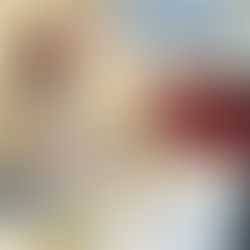
2/29/24
Studio Visit
In the Studio with Niousha Kiarashi
CMA Artist in Residence Niousha Kiarashi shares how growing up in Iran’s Caspian Sea region mirrored her own immigration journey to New York.
Click to expand media gallery.
As part of CMA's Residency for Experimental Arts Education, Niousha Kiarashi leads art classes for elementary school students at Sid Miller Academy, a District 75 school serving students with disabilities in Crown Heights, Brooklyn. Below, visit Niousha in her studio and get a glimpse at her artistic process.
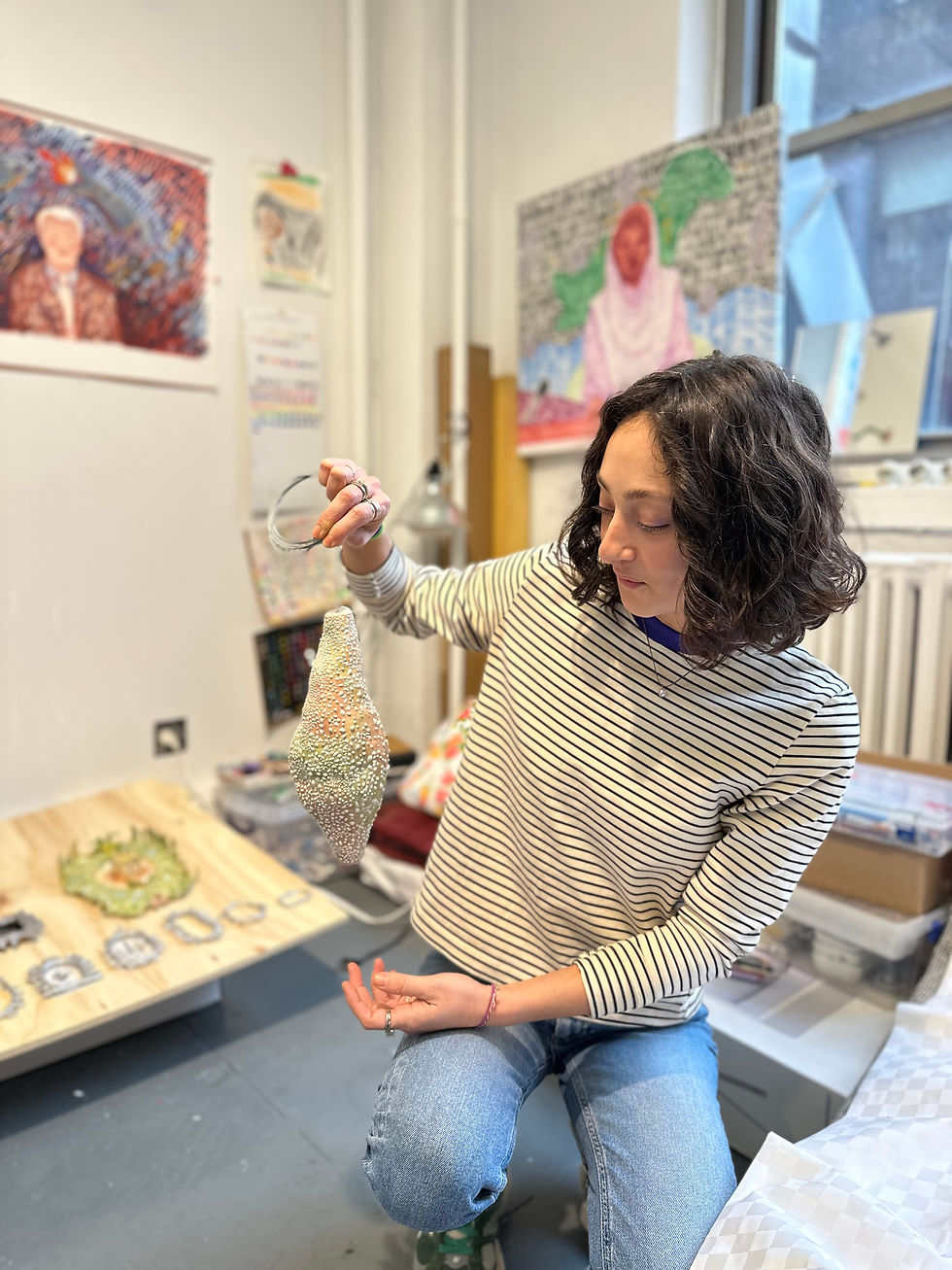
On Evolving Her Practice and Ceramic Cocoons
I am a total night owl and it takes me a long time to get oriented in my studio space. I tend to make a big mess, fill the walls with notes and drawings, then step back to see everything I have. I make a lot of my work outside of the studio, too. My work is influenced by nature, so I often go out and find spaces that are inspiring to me. I focus on the microcosms in these environments and take macro photographs of the patterns and textures in the mushrooms, plants, and wildflowers.
Since moving to New York, I can’t get out of the city as easily. That has actually changed parts of my practice. Previously, all of my drawings and pictures were full of color, but now they’ve shifted to black and white. It’s as if I’m resetting and starting over.
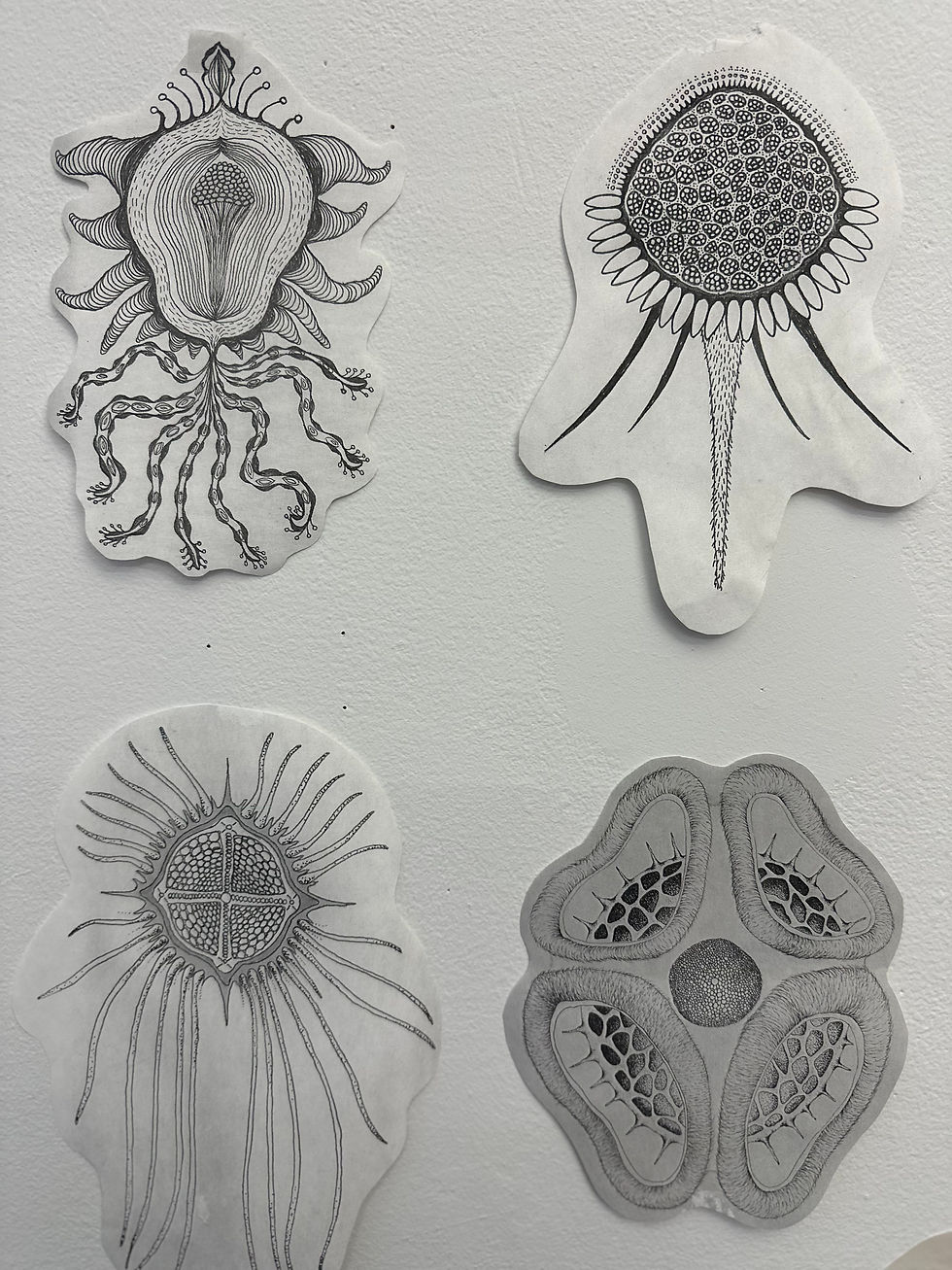
Ceramics became my primary practice when I was finishing grad school at Pratt. I usually start with a drawing or a macro photograph that I took in nature, then I go wild experimenting with different methods, glazes and underglazes. These ceramic pieces are influenced by the shape of butterfly cocoons and are made to be hung. The textures represent an invasion taking place on the surface of the cocoons. I see our emotions as being their own type of invasive species — they take over our mind and body and cause us to morph into entirely new beings.
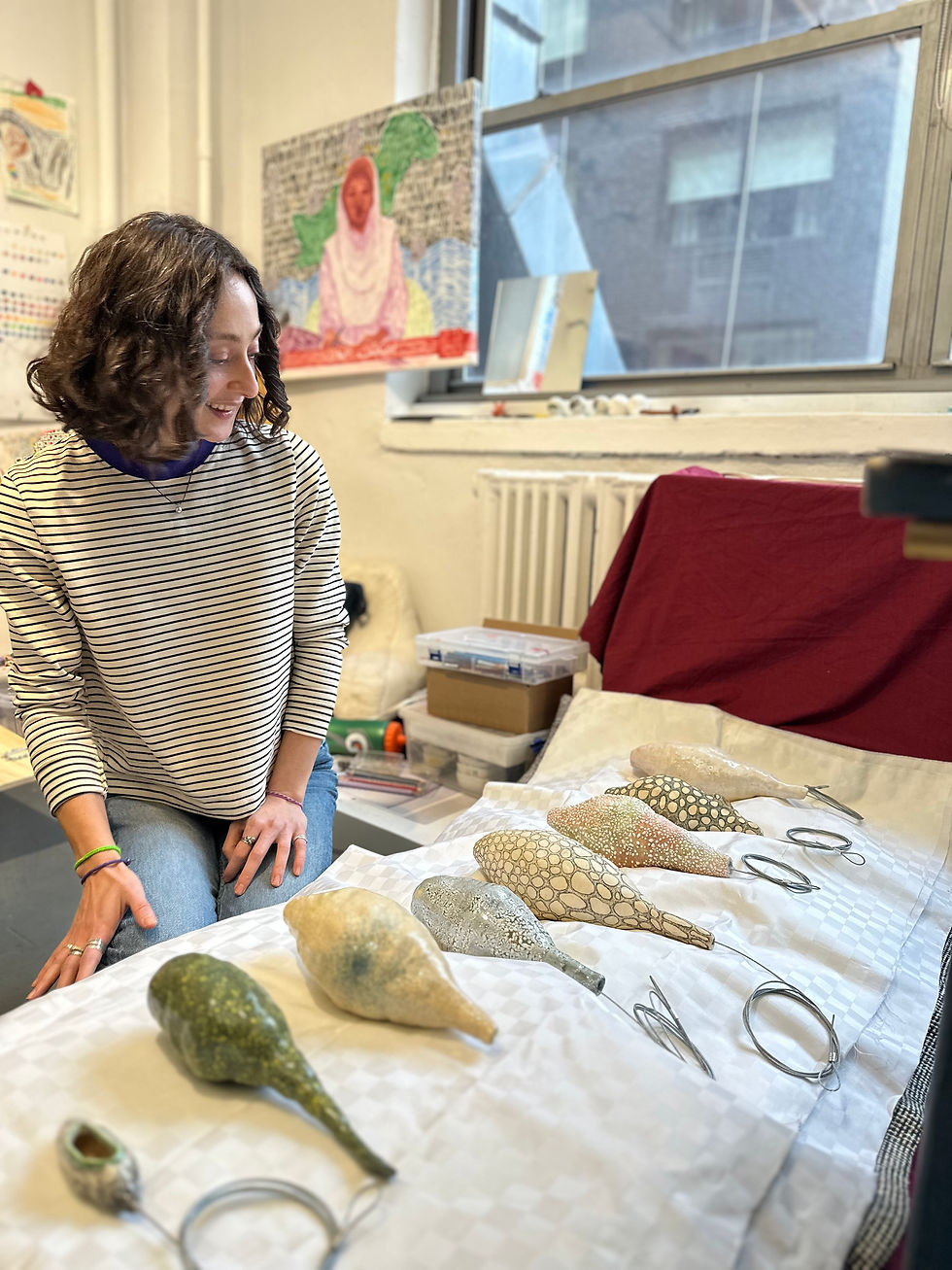
On Snails
We had snails in our garden since childhood, so I’m used to seeing them all over the place. Some even jumped back into our house through the windows. In recent years, I became fascinated by their movements and characteristics. I had a project in mind to document their movements on my skin so I could better understand their pace. The texture of the snail’s body changes as it moves, which I always found fascinating.
I took four snails from up north back to my apartment in Tehran for a project. Then the pandemic happened, and it became eight months of us living together in quarantine – just me and those snails exploring life together. Instead of sitting around doing nothing during quarantine, I observed the snails all day long … moving around their box, letting them crawl in the living room, going on my plants.

When I moved to New York, I began reading the book The Sound of a Wild Snail Eating by Elizabeth Tova Bailey. The woman in the book is bed-ridden with a rare disease, but she did exactly what I did – observing snails. I loved that. It’s a creature that has attracted so many thinkers and artists to focus on its behaviors.
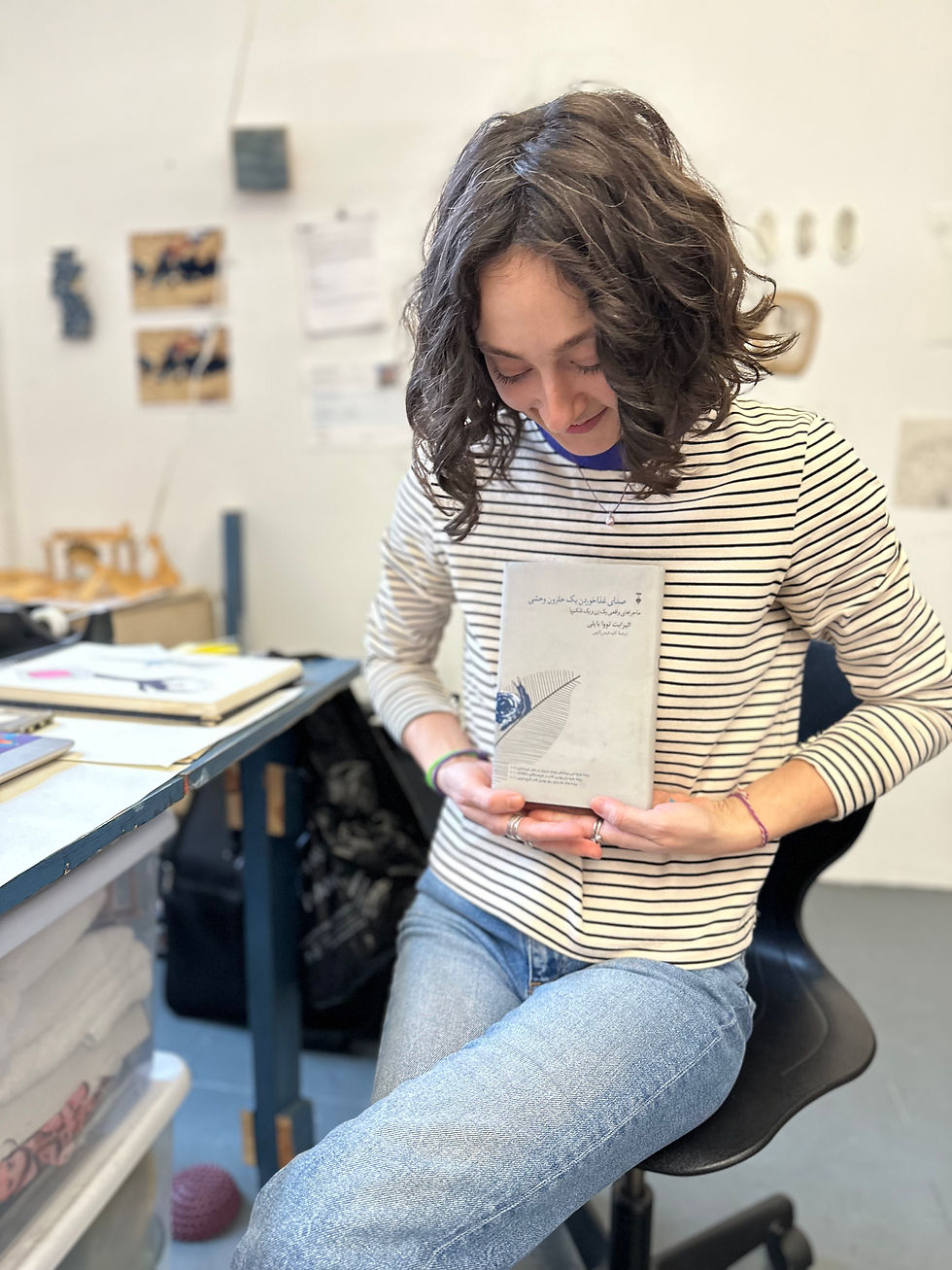
I emphasize with snails because they have a strong sense of survival and independence. They’re flexible about life; they have their shell on their back. If their shell breaks, they can grow it back in beautiful ways. Snails are also an invasive species, which is interesting to think about because they are so slow yet consistent … always moving forward regardless of their situation. I have a deep emotional connection to them, which makes sense, because humans are the largest invasive species on Earth. Plus, I immigrated here, to New York, so it comes full circle.
I actually had a snail in my thesis show at Pratt. I created a landscape that contained ceramic creatures, each representing different emotions. The snail represented myself in that environment. After the show, the snail unfortunately disappeared in my studio, and I never found it. They usually can survive in hibernation for a long time, so I hope it has made its way back to nature.

On Iranian Lagoons
I grew up in a small port town called Anzali, a green fragment of land between the Caspian Sea and the imposing Alborz Mountains. Our house, in proximity to this environment, provided an extensive stage to act out grand adventures and explore the microcosm of our childlike universe. It’s also famous for the Anzali Lagoon. The lagoon is very important to the ecosystem of that area, but has been neglected. As a result, it is suffering from pollution and in danger of drying out.
I made a video where I became the spirit of the lagoon. It’s about division – the lagoon divides the city into two parts. It’s also divided from the Caspian Sea, so it became this special wetland that is now vanishing. Once I moved to Tehran, I became divided from my hometown, and then from my country when I moved to New York, so I’ve experienced the loss of that ecosystem as well.

The spirit is saying goodbye to the area that is on the brink of extinction. It knows that there’s nothing it can do to save the lagoon — the only thing it can do is simply exist in that air for that moment. I made the costume myself — there are tentacles that represent thoughts emerging from my body and becoming roots reaching for the ground, and a mask made in the shape of a wild plants’ leaf that grows beside the lagoon.

On Her Parent’s Influence
With my parent’s medical background, the house itself harbored a library of scientific books. I became immersed in anatomical images, microscopic images of tissues and diseases with their astounding patterns and textures. Those illustrations awakened my desire to become more intimate with nature and the mysterious world inside. I learned that there are many universes existing in parallel, at different scales, and in tranquil harmony; some advancing with lava-like pace, while others pulsating at the rate of bacteria proliferation.

On days when school ended early, I would go to my parent’s office and play with old patients’ casts. I would use dentistry tools and devices to carve different shapes. There were always at least 26 teeth that I could play around with!

Dentistry is all about going inside someone’s mouth and doing very meticulous things with their teeth. That influenced me a lot, both in my practice and how I observe the world around me.

On Field Recordings and Childhood Opera Lessons
My favorite medium is sound. I’ve never fully focused on it because I was always busy studying at university, or I had other priorities in my life. Now that I finished grad school, I’m focusing on sound more deeply and trying to make it my primary medium. I’ve collected a lot of field recordings throughout the years, and I plan to use them as material. I also love composing and collaging different materials together.

I started taking piano lessons when I was four – my feet couldn’t even reach the pedals. After that, I switched to classical guitar, then began studying opera at age 13. My teacher was a famous opera singer before the Iranian Revolution. He wasn’t allowed to sing after the revolution, so he began to teach. He passed away soon after I started taking lessons, and I didn’t continue my opera training after that. I would go over to his house for lessons, and even though it was very dusty, he had a fish bowl that I would help him tend to.
Listen to a playlist by Niousha here




















